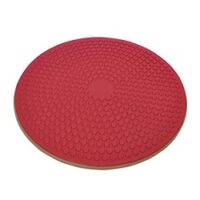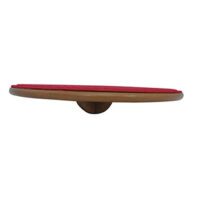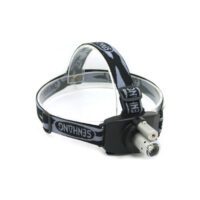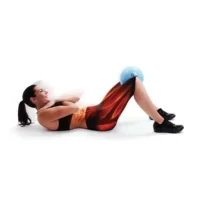Balance
Article by John Miller


Mastering Balance: A Physiotherapist’s Guide
Balance is a cornerstone of our daily activities, influencing everything from simple movements to complex athletic performances. Understanding and mastering balance, particularly after an injury, is crucial. This article explores the concepts of balance and proprioception, their importance, and the role of physiotherapy in enhancing these critical abilities.
What is Balance?
Balance is the ability to maintain the body’s centre of gravity within its base of support. It involves a complex interplay of sensory input, brain processing, and muscular response. Good balance requires the integration of visual, vestibular (inner ear), and proprioceptive (sense of body position) inputs to maintain stability and orientation.
Understanding Proprioception
Proprioception is our body’s intrinsic sense of its position and movement in space. This sense is crucial for maintaining balance, especially when visual cues are limited. Impairment in proprioception, often due to joint injuries like ligament sprains, can lead to a loss of balance and stability.
The Impact of Injury on Balance
Injuries can significantly disrupt balance and proprioception. However, with appropriate physiotherapy interventions, these can be effectively restored. Physiotherapists are skilled in guiding patients through the recovery process, ensuring both proprioception and balance are regained.
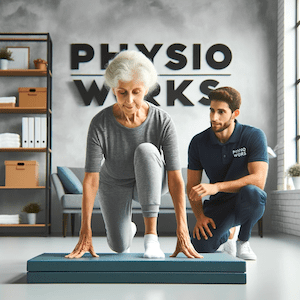
Falls Prevention
Falls are a major concern, especially in older adults, and are often linked to poor balance. Physiotherapists play a key role in falls prevention through balance training and strength exercises. They also advise on environmental modifications to reduce fall risks at home and in other settings.
Read more: Falls Prevention
Balance Assessment
A thorough balance assessment is essential in identifying the root causes of balance issues. Physiotherapists use various techniques and tools to assess balance, including static and dynamic balance tests. These assessments help in tailoring specific rehabilitation programs.
Read more: Balance Assessment
Proprioception and Balance Exercises
Balance and proprioceptive exercises are designed to retrain the body to control the position of a weakened or injured joint. Tools like balance mats and wobble boards are commonly used to re-educate the body in reacting to instability, improving both conscious and subconscious balance.
Read more: Balance Exercises
Balance Improvement
Improving balance involves specific exercises that challenge the body’s balance system. This can include activities like standing on one leg, walking on uneven surfaces, or using equipment like balance pads. These exercises not only improve balance but also enhance overall coordination and agility.
Read more: How to Improve Balance
Conclusion
Balance and proprioception are fundamental to our daily functioning and athletic performance. Understanding their roles and the impact of injuries on them is essential. Through targeted exercises and physiotherapy interventions, it’s possible to significantly improve balance and prevent falls, enhancing overall quality of life and physical performance.
Rochedale - Call 38410277
Book Online: RochedaleSalisbury - Call 32751044
Book Online: SalisburySandgate - Call 32691122
Book Online: SandgateArticle by John Miller
Balance Exercises
How to Improve Your Balance
Improving your balance is not only possible, but it can also be remarkably straightforward. Recent scientific research underscores the effectiveness of balance retraining. Remarkably, you can see significant improvements in just a few weeks by incorporating progressive balance exercises. These exercises work to normalise your balance and corrective reactions, essential for everyday activities and sports performance.
The Importance of Balance Assessments
A crucial first step in improving balance is undergoing a professional balance assessment. Physiotherapists are skilled in safely evaluating your balance and prescribing tailored exercises and equipment for balance improvement. These assessments form the foundation for a personalised balance enhancement program.
Read more: Where Can You Get Your Balance Assessed?


The Best Exercises for Fall Prevention
One of the primary benefits of improved balance is fall prevention. This is particularly important as we age. Exercises that enhance strength, balance, and righting reactions are central to fall prevention. Safety during these exercises is paramount. A physiotherapist can tailor a safe, effective fall-prevention exercise program to your needs. This personalised approach ensures a steady progression as your balance improves. For professional guidance on starting a fall-prevention exercise routine, consult your physiotherapist.
Utilising Balance Enhancement Products
Over the years, clinicians have developed a range of products that effectively enhance balance. These products have shown success in reducing falls plus also ankle and knee ligament sprains and improving daily and sporting performance. Many of these can be used conveniently at home to boost your balance, reduce injury risk, and alleviate joint pain.
Some recommended balance enhancement products include:
Incorporating these products into your balance training can maximise benefits, leading to improved balance and stability.
For more details: Balance-Related Products
New Research and Developments in Balance Training
Recent studies have brought to light new insights in balance training. These include the importance of multi-directional exercises, the role of core strength in balance, and the benefits of proprioceptive training. Integrating these elements into balance training can lead to more comprehensive improvements.
Conclusion and Next Steps
Improving your balance is an achievable goal with the right approach. Starting with a professional assessment and following through with tailored exercises and the use of enhancement products can lead to significant improvements. The evolving field of balance training continues to offer new strategies and insights.
What to Do Next?
Seek professional advice from your physiotherapist. They can guide you through a safe, effective balance improvement program tailored to your needs. Remember, the journey to better balance starts with a single step – reaching out to a professional!
More Info
Rochedale - Call 38410277
Book Online: RochedaleSalisbury - Call 32751044
Book Online: SalisburySandgate - Call 32691122
Book Online: SandgateArticle by John Miller
Balance Assessment
The Key to Stability and Safety
Introduction
Balance plays a crucial role in our daily lives, influencing everything from walking to sports performance. A physiotherapist's perspective brings a new dimension to understanding and improving balance. In this article, we'll explore the latest in balance assessment and physiotherapy techniques, helping you to maintain stability and prevent falls.
Why is Balance Assessment Important?
Balance assessment is vital for identifying balance issues and preventing falls. Falls are a significant health concern, especially among older adults, leading to injuries and loss of independence. Physiotherapists use a variety of balance assessment tests to pinpoint specific issues and tailor rehabilitation exercises accordingly.
How Does Physiotherapy Help with Balance?
Physiotherapy plays a pivotal role in improving balance. Physiotherapists are highly-trained in movement and function. They use targeted exercises to strengthen muscles, improve coordination, and enhance proprioception – the body's ability to sense its position in space.
Latest Research in Balance Improvement
Recent studies highlight the effectiveness of tailored exercise programs in improving balance. These programs often include strength training, coordination exercises, and activities that challenge the body's balance system. Research also shows that incorporating virtual reality and interactive gaming can make balance training more engaging and effective.
Balance Assessment Tests
Physiotherapists use various tests to assess balance. These may include the Berg Balance Scale, the Dynamic Gait Index, and the Timed Up and Go test, just to name a few. These tests provide valuable information about an individual's balance and risk of falling.


The Best Exercises for Balance Improvement
- Strength Training: Strengthens leg muscles, crucial for maintaining balance.
- Yoga and Tai Chi: Improve flexibility and mental focus, enhancing balance.
- Dynamic Balance Exercises: Challenge the body’s ability to maintain stability while in motion.
- Proprioceptive Training: Enhances the body’s awareness in space.
Balance Enhancement Products
Incorporating balance-enhancing products into your routine can significantly improve stability. These include balance discs, balance pads, Swiss exercise balls, and wobble boards. They provide a safe and effective way to challenge and improve your balance.
For more details: Balance-Related Products
When to Seek a Physiotherapist's Help?
If you're experiencing frequent falls, dizziness, or a general sense of instability, it's time to consult a physiotherapist. They can provide a thorough balance assessment and create a customised treatment plan.
Conclusion
Balance assessment and improvement are essential for maintaining a healthy, active lifestyle. With the help of a skilled physiotherapist, you can enhance your balance, prevent falls, and improve your overall quality of life.
What to Do Next?
If you're concerned about your balance or have experienced falls, don't hesitate to seek the advice of a physiotherapist. They can provide a comprehensive balance assessment and tailor a treatment plan to meet your specific needs. Remember, maintaining good balance is key to your independence and wellbeing.
More Info



